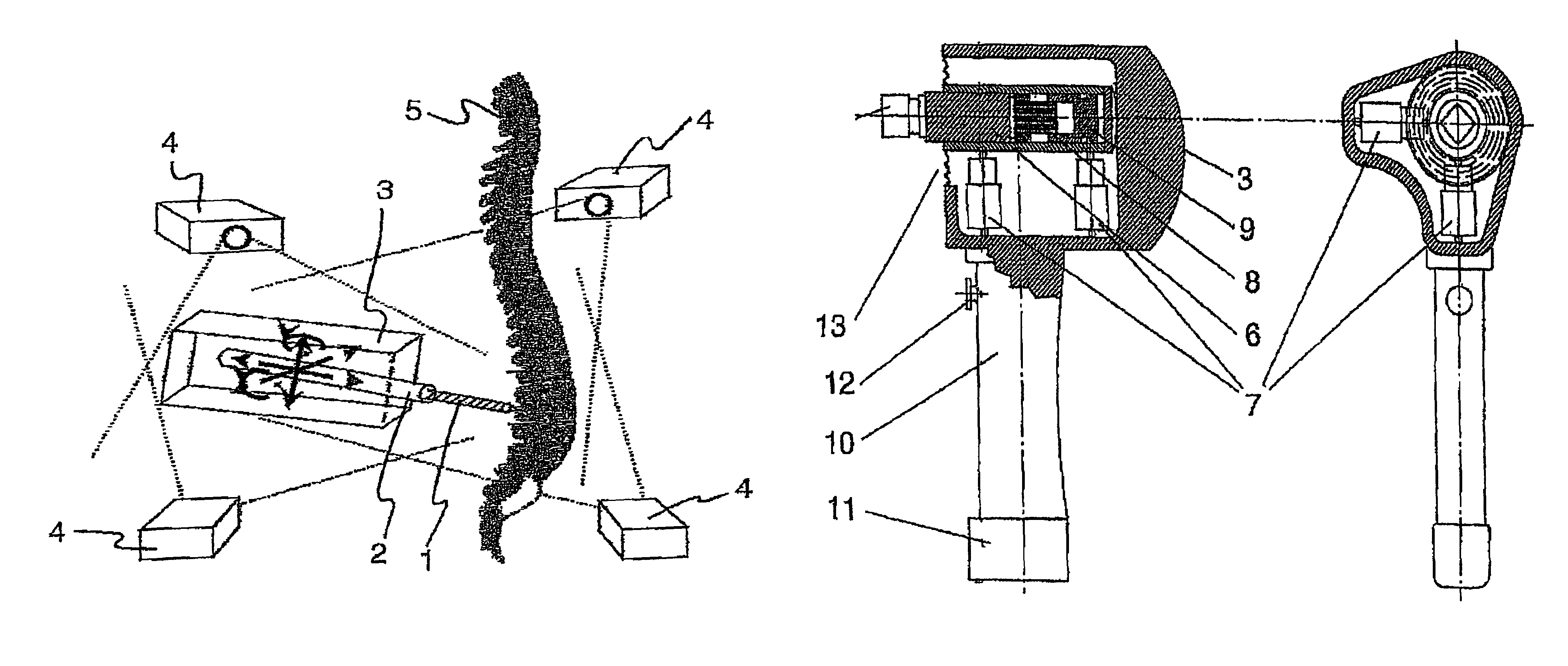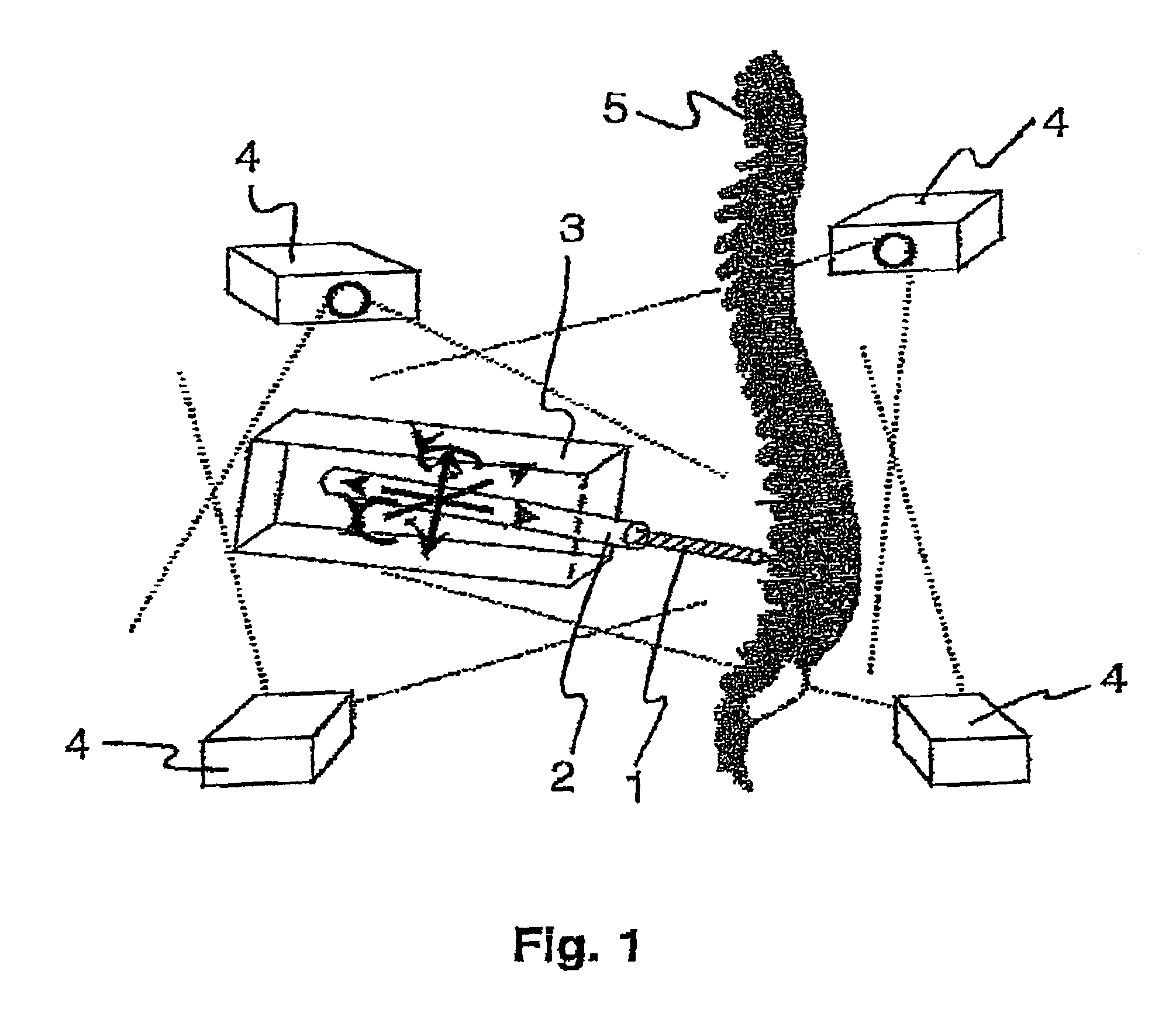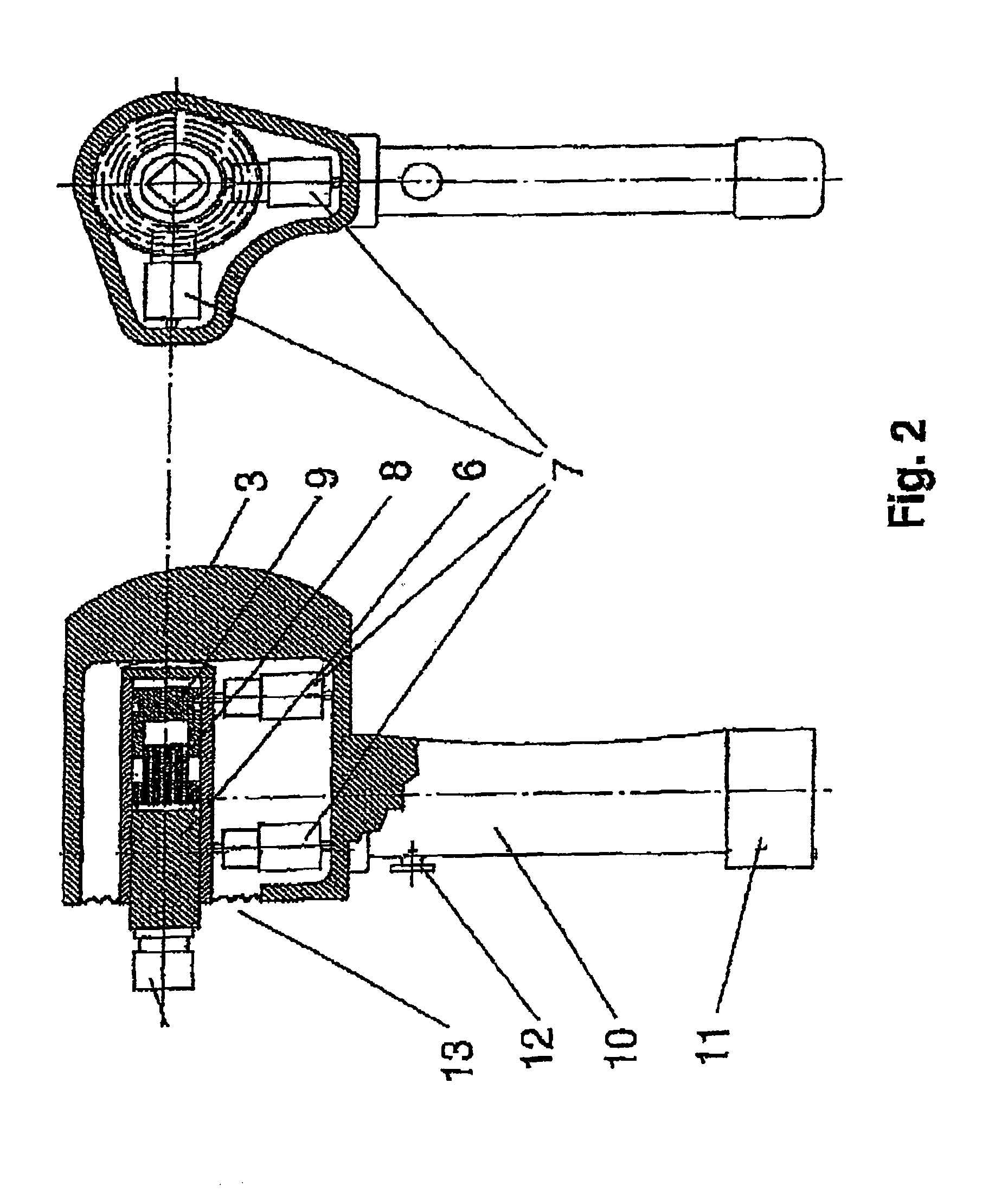Device and method for treating parts of a human or animal body
a technology for treating parts and animals, applied in the field of devices and methods for treating parts of human or animal bodies, can solve the problems of prolonged operation, high cost of purchase and upkeep, and the inability of computer-navigating tools to automatically reach the desired position, and achieve the effect of convenient integration
- Summary
- Abstract
- Description
- Claims
- Application Information
AI Technical Summary
Benefits of technology
Problems solved by technology
Method used
Image
Examples
Embodiment Construction
[0037]The embodiment of a device according to the invention as schematically illustrated in FIG. 1 comprises a tool 1 in the form of a drill, which is clamped into a tool holding fixture 2. By means of an actuation unit not shown in FIG. 1, it is possible to move the drill 1 relative to a housing 3 in six degrees of freedom: displacements along three Cartesian axes x, y, and z, as well as rotations about the three axes, with the displacement in the z direction being the advance of the drill, and the rotation about the z axis the rotation of the drill.
[0038]An optical position finding system detects the objects of interest. The objects being detected are the drill 1, and / or the housing 3, as well as a body part being treated, which is shown in FIG. 1 in the form of a spinal column 5. The images of cameras 4 are analyzed in a PC. By means of a stereoscopic rear projection, it is possible to determine from the camera images the position of the objects in the space.
[0039]FIG. 2 schemati...
PUM
 Login to View More
Login to View More Abstract
Description
Claims
Application Information
 Login to View More
Login to View More - R&D
- Intellectual Property
- Life Sciences
- Materials
- Tech Scout
- Unparalleled Data Quality
- Higher Quality Content
- 60% Fewer Hallucinations
Browse by: Latest US Patents, China's latest patents, Technical Efficacy Thesaurus, Application Domain, Technology Topic, Popular Technical Reports.
© 2025 PatSnap. All rights reserved.Legal|Privacy policy|Modern Slavery Act Transparency Statement|Sitemap|About US| Contact US: help@patsnap.com



